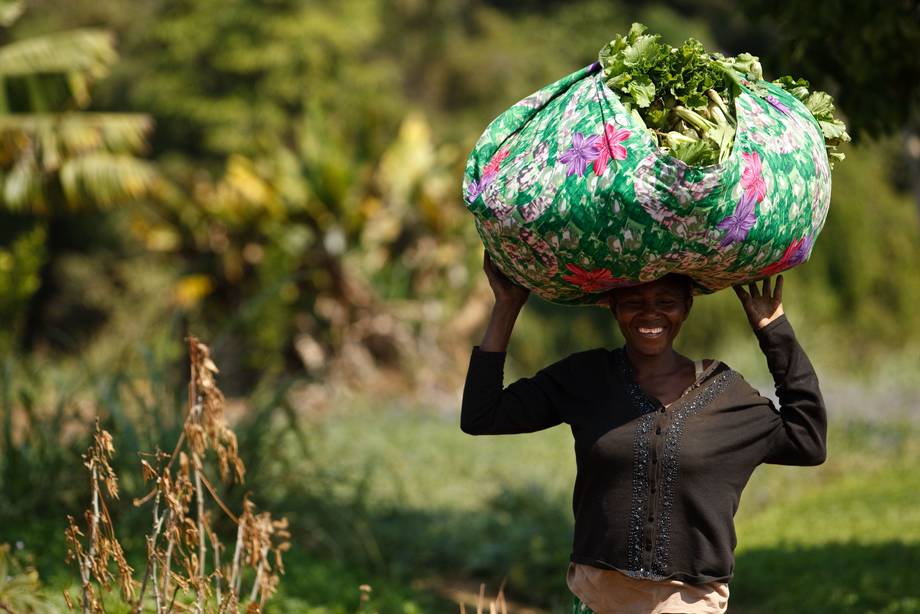Ghana at a glance

The Republic of Ghana, lies within latitude 4o 44’ N and 11o11’ N and 3o 11’ W and 1o11’ E. Ghana is bordered by the Republic of Togo to the east, Burkina Faso (formerly Upper Volta) to the north-west and north, and the Republic of Côte d’Ivoire to the west. The Gulf of Guinea, which is part of the Atlantic Ocean lies south of the country, and it forms a 550km-long coastline. The Volta River basin, including the artificially created Lake Volta, dominates the country’s drainage system.
Ghana has a population of 25.37 million, with a per annum growth rate of 2.19 %, and a mean population density of 77 persons/km2. The population distribution is varied across the 10 administrative regions and eco-zones of the country, with 68 % and 32 % living in the rural and urban areas respectively. About 52 % of the labour force is engaged in agriculture, 29 % in services and 19 % in industry. Approximately, 39 % of farm labour force is women. Agriculture contributes to 54 % of Ghana’s GDP, and accounts for over 40 % of export earnings, while at the same time providing over 90 % of the food needs of the country. Ghana’s agriculture is predominantly smallholder, traditional and rain-fed (SRID, 2001).
About 136,000 km2 of land, covering approximately 57 % of the country’s total land area of 238,539 km2 is classified as "agricultural land area" out of which 58,000 km2 (24.4 %) is under cultivation and 11,000 hectares under irrigation. About 60 % of all farms in the country are less than 1.2 hectares in size, 25 % are between 1.2 to 2.0 hectares, with a mere 15 % above 2.0 hectares. The mean farm size is less than 1.6 hectares. Small-size and medium-size farms of up to 10.0 hectares account for 95 % of the cultivated land (SRID, 2001).
Ghana’s farming systems vary with agro-ecological zones. However, certain general features are discernible throughout the country. The bush fallow system prevails wherever there is ample land to permit a plot to be rested enough to recoup its fertility, after one to three years’ cultivation. Staple crops are often mixed-cropped while cash crops are usually monocropped.
In the forest zone, tree crops are significant with cocoa, oil palm, coffee and rubber being of particular importance. The food crops in this area are mainly inter-cropped mixtures of maize, plantain, cocoyam and cassava. The middle belt is characterized by mixed or sole cropping of maize, legumes, cocoyam or yam, with tobacco and cotton being the predominant cash crops. Cotton and tobacco are also important in the northern sector, where the food crops are mainly sorghum, maize, millet, cowpeas, groundnuts and yam. Rice is important in all the zones.
Although the majority of rural households keep some sort of livestock, livestock farming is adjunct to crop farming. Poultry predominates in the south, while cattle production is concentrated in the Savannah zones. Sheep and goat production is generally widespread throughout the country (MoFA, 1998).
Livestock production is a major feature in Ghana’s agriculture and contributes largely towards meeting food needs, providing draught power, manure to maintain soil fertility and structure as well as to provide income, particularly for farmers in the northern part of the country. The livestock sector contributes in direct products about 7 % of agricultural GDP (SRID, 2001), excluding manure and draught power that is provided to the crop sector. Ruminant livestock play a major role in the socio-cultural life of the farming communities as a partial determinant of wealth, payment of dowry, and act as a bank and insurance in times of difficulty. Sheep and goats are often slaughtered for various occasions and functions such as births, funeral and marriages (MoFA, 1990).
Domestic livestock meat production is low, and amounted to 66,283 metric tons in the year 2000 (Table 1) of which beef contributed about 27 %, mutton about 18 %, goat meat and pig meat about 17 % each, and poultry meat about 21 % (SRID, 2001). Domestic milk production is estimated at 13,700 metric tons for the same period.
Both the meat and milk production represent about 30 % of the national animal protein requirements. The country depends on imports of livestock, meat and milk to meet the animal protein shortfall. It is, however, difficult to estimate the amount of livestock and meat imported, as most of the live imports from the northern neighbours, Burkina Faso, Mali and Niger, are not recorded. The quantity of livestock product imports (through the main port at Tema) in 1998 was 22,727 metric tons; made up of 10,143.5 metric tons poultry, 1,724.0 metric tons beef, 757 metric tons pork, 9,941.1 metric tons dairy and 362.7 other products (LPIU, 1999).
